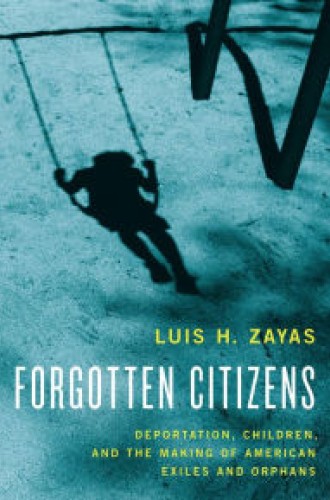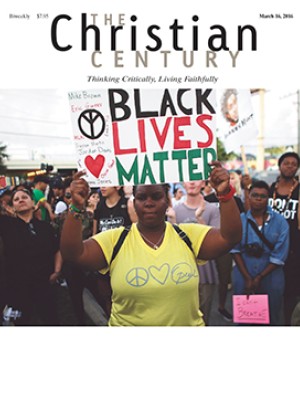Fear and trauma in immigration policy
On Christmas Eve, agents associated with the Department of Homeland Security raided the homes of 121 adults and children said to have arrived recently in the United States from Central America without documents. Timed as they were, the raids seemed designed to create a wave of trauma and fear through immigrants already in the United States as well as those still considering the risky move across borders. Homeland Security Secretary Jeh Johnson appeared to say as much when he defended the widely criticized raids as an attempt to send a message to other Central Americans considering fleeing the violence of their countries. “People should take from this the understanding that the administration is quite serious when it comes to enforcing immigration laws.”
Anthropologist Jason De León and psychologist Luis Zayas describe the tradition and effects of using trauma and fear to enforce the nation’s immigration laws. De León tells the story of deportation and immigration policy in relation to his extensive fieldwork among deportees. Zayas explores the phenomenon of divided families, detailing the effects of U.S. immigration policy on children who are citizens but whose parents are living in the United States without documents. Both books underscore what the Christmas Eve raids so vividly demonstrate: that U.S. immigration policy has long used the imposition of trauma and the dynamics of fear to control who crosses the southern U.S. border.
Read our latest issue or browse back issues.
While I’m tempted to portray Jeh Johnson as a man whose singular obsession with enforcement frequently overcomes commonsense and common decency, his words and policies are in fact part of a larger U.S. strategy that can be traced to the 1990s. At that time, the use of trauma and fear to enforce immigration laws came to be called officially Prevention Through Deterrence. The meaning of Prevention Through Deterrence has varied over time, and De León tells some of this story. Prevention Through Deterrence has meant, for example, strategically placing security checkpoints along the border in locations that force would-be border crossers more deeply into the deadly desert.
De León concedes that “no public record explicitly states that a goal of PTD is to kill border crossers in an attempt to deter other would-be migrants.” Yet death is widely recognized as a result. A 2010 report to Congress calls the increase in desert-related deaths an “unintended consequence” of a policy that has led migrants to attempt more dangerous desert crossings.
We can see this policy at work more recently in Mexico. Los Angeles Times reporter Sonia Nazario has detailed attempts by the United States to coordinate with Mexican police to keep Central American immigrants from reaching the U.S. border. She writes that with the urging and support of the United States, Mexican police have conducted tens of thousands of raids on migrants and have transferred immigration agents to its southern border in an attempt to curb the flow of Central Americans entering Mexico. This might appear on the surface to be a good strategy—fewer people reaching the United States’ southern border means fewer immigration problems—but the real result is increased violence and death along the migrant trail. Nazario writes, “The government push has been interpreted as open season on migrants who have become prey to an exploding number of criminals and the police who rob, rape, beat and kill them.” The United States has, in other words, transferred its own law enforcement to a notoriously more corrupt force.
De León vividly details the dark side of Prevention Through Deterrence. In an early chapter he describes interviewing subjects along the U.S. border when he sees the dead body of a man in a field. “The dude had been dead less than an hour,” he writes. “And yet the flies were already there in full force.” As he attempts to discover the identity of the dead man, one informant, a man he calls Chucho, tells him: “This happens all the time. . . . You watch. No one will remember this tomorrow. It’s like it didn’t even happen.” De León is blunt in his assessment: “The terrible things that this mass of migrating people experience en route are neither random nor senseless, but rather part of a strategic federal plan that has rarely been publicly illuminated or exposed for what it is: a killing machine that simultaneously uses and hides behind the viciousness of the Sonoran Desert.”
De León tries to document the lives of the undocumented. As he tells the stories of Memo and Lucho, two men he meets in a shelter for deportees in Nogales, Mexico, he reveals the men’s humor, determination, and resourcefulness as they attempt to return to their lives and families in the United States despite setbacks. He also tells of José and Maricela, who do not make it out of the desert, and of their families on both sides of the border who are waiting for word.
In Forgotten Citizens, Zayas is concerned about the subtler effects of a trauma- and fear-based immigration system. His team of researchers interviewed dozens of children born in the United States whose parents are undocumented immigrants. One 11-year-old girl, Felicita, tells the researcher about a dream she had in which buses came to her house while she was playing hide-and-seek with her cousins. “They were looking for people, and I didn’t know who they were looking for. Then they said . . . ‘Show me your papers!’ . . . My friends they all had black hoodies and they could cover themselves well, but I had a pink sweater . . . They took me to . . . jail and my mom was there and her hands were covered in blood.”
Zayas writes about another very young child facing the potential deportation of her father, who had been reported to authorities by a coworker. With her father under threat, Virginia’s normal childhood development started to slow. Her preschool teacher described her as occasionally curled up in the corner of the classroom in a fetal position. As she moved into kindergarten, she stopped speaking regularly, a result of stress that psychologists call “expressive aphasia.”
Zayas estimates that there are 4.5 million children in the United States facing the same reality as these two children. His study suggests that fears of parental deportation have nearly as many harmful effects as deportation itself. Mostly by telling the stories of specific cases, Zayas argues that we have good reason as a nation to make family unity a high priority in our immigration decisions. This is a tradition, he argues, that goes back more than a hundred years, but that has gotten lost in recent decades and policy debates. The children who are growing up traumatized by poorly made immigration policy are our children. This “shadow population” of citizens needs a deeper sense of security and stability.
As both De León and Zayas point out, decades of research show that border enforcement does little to deter undocumented immigration. Instead it reinforces the need for immigrants to stay in the United States and heightens both the fear and danger of failing to stay under the radar. Zayas and De León give us real life portraits of people affected by our country’s failure to enact meaningful immigration reform. Memo and Lucho, after four wrenching, life-threatening border crossings, never question whether they will try again if they are caught and sent back. “I have nothing really to go back to . . . Crossing is my last option,” Lucho tells De León.
For the children in Zayas’s study, the question is how much of the burden of U.S. immigration policy will they have to bear? Will they lose a parent or only live in fear? Will they end up as orphans or exiles or only as children carrying a heavy family secret?
The Christmas Eve raids demonstrated that the U.S. government is as determined as ever to pursue Prevention Through Deterrence. The toll this policy takes on citizens and noncitizens, adults and children, migrants and their communities, and our nation as a whole remains very high. At the very least, journalists and scholars from multiple disciplines are documenting it.









